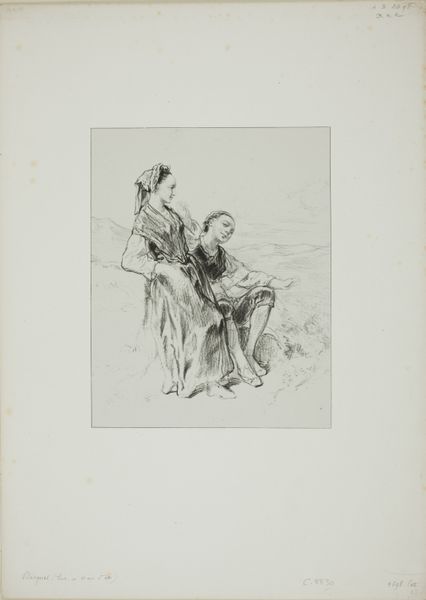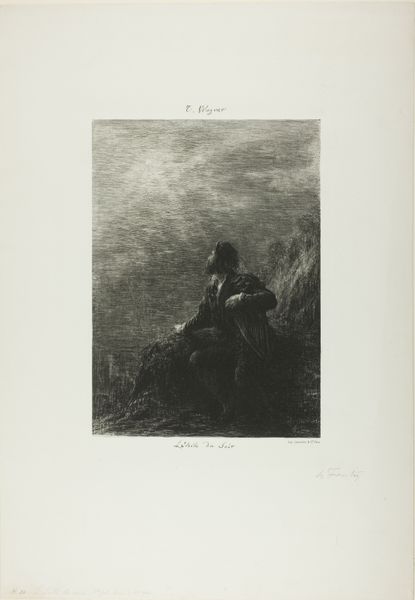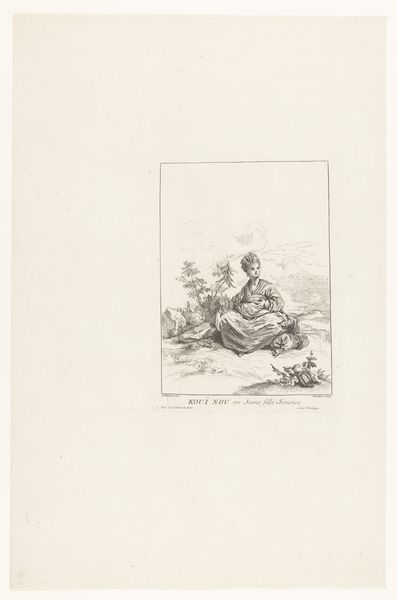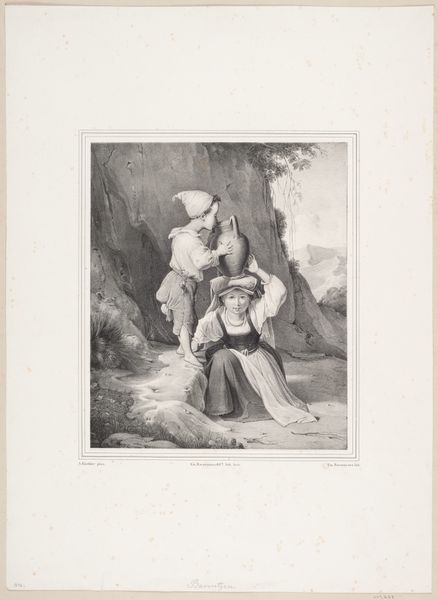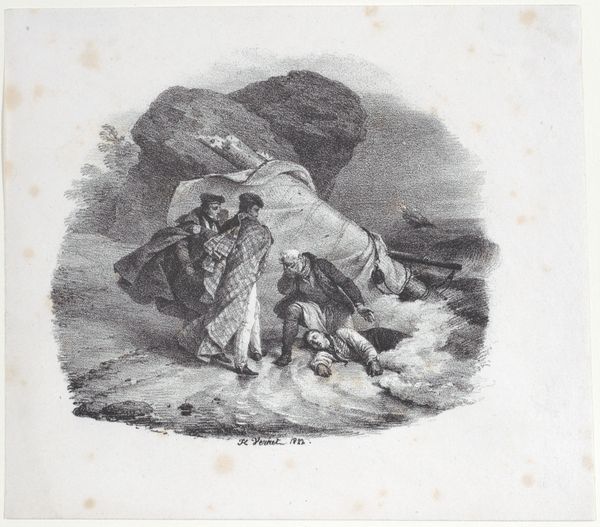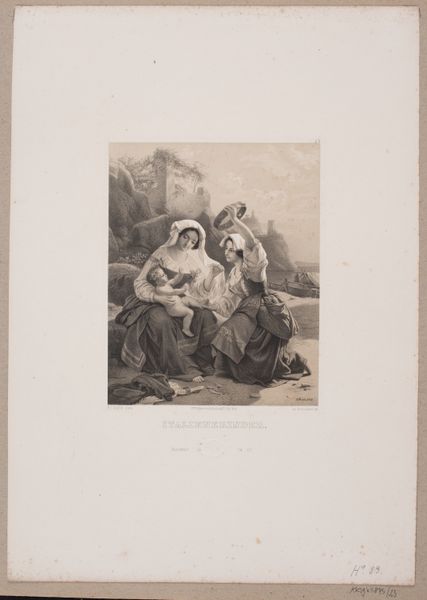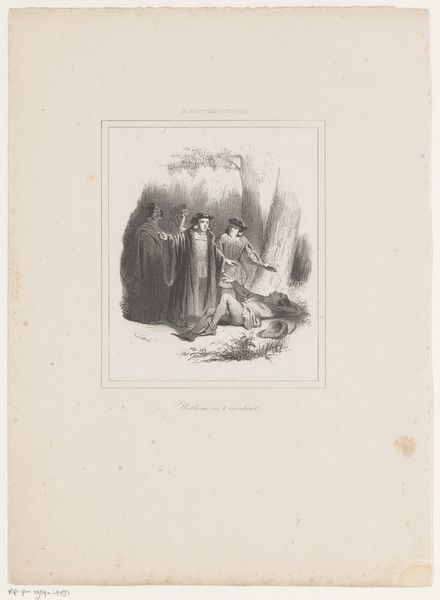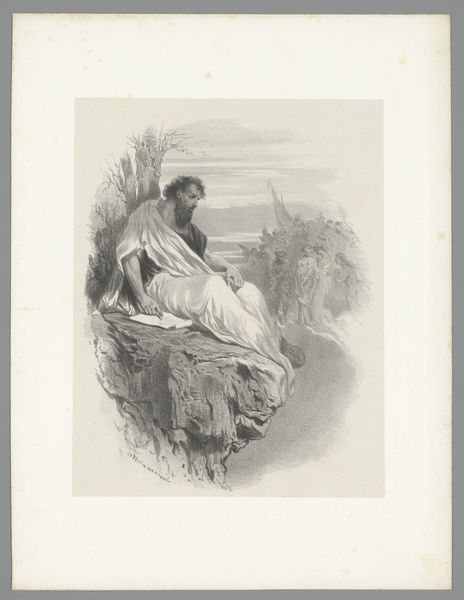
drawing, print, etching, paper, pencil
#
portrait
#
drawing
# print
#
etching
#
paper
#
pencil drawing
#
pencil
#
genre-painting
#
pre-raphaelites
#
realism
Dimensions: 205 × 160 mm (plate); 366 × 267 mm (sheet)
Copyright: Public Domain
Editor: This is “The Young Mother,” an 1857 etching by Sir John Everett Millais. There’s a stillness to it, a quiet domesticity. It looks incredibly intimate. What do you make of this, our expert? Curator: Intimate is precisely the word! Millais, though revered for his Pre-Raphaelite paintings bursting with color, reveals a tender vulnerability here. Look at the gentle lines describing the mother's form. She's nestled low to the ground, almost blending into the landscape, her protective stance a mirror to its contours. Have you ever felt like a landscape reflecting inner feelings? Editor: Absolutely. It’s like her identity is tied to her role, her very being. And the sketchiness emphasizes the raw, unfiltered emotion. I do notice she isn’t looking directly at the child, she’s looking down, she has such a severe angle… what does that suggest to you? Curator: It whispers of the overwhelming nature of early motherhood. That downward gaze isn't neglect; it's the exhaustion and intense focus required for such devotion. Perhaps also an awareness, even a lament, of her changing place in the world? The vastness of the setting contrasts with the small huddle of figures creating a wonderful tension. And it invites a broader reflection: what does 'motherhood' mean, divorced from saccharine depictions? Editor: So, more than a simple scene of mother and child, it's an exploration of identity, emotion, and the sometimes isolating experience of motherhood in a changing world? Curator: Precisely. And isn't that far more captivating than a purely pretty picture? It encourages empathy and a recognition of the layered experiences behind seemingly simple roles. Editor: This has made me rethink my initial assumptions. The simple scene felt much more profound now! Thanks so much.
Comments
No comments
Be the first to comment and join the conversation on the ultimate creative platform.

